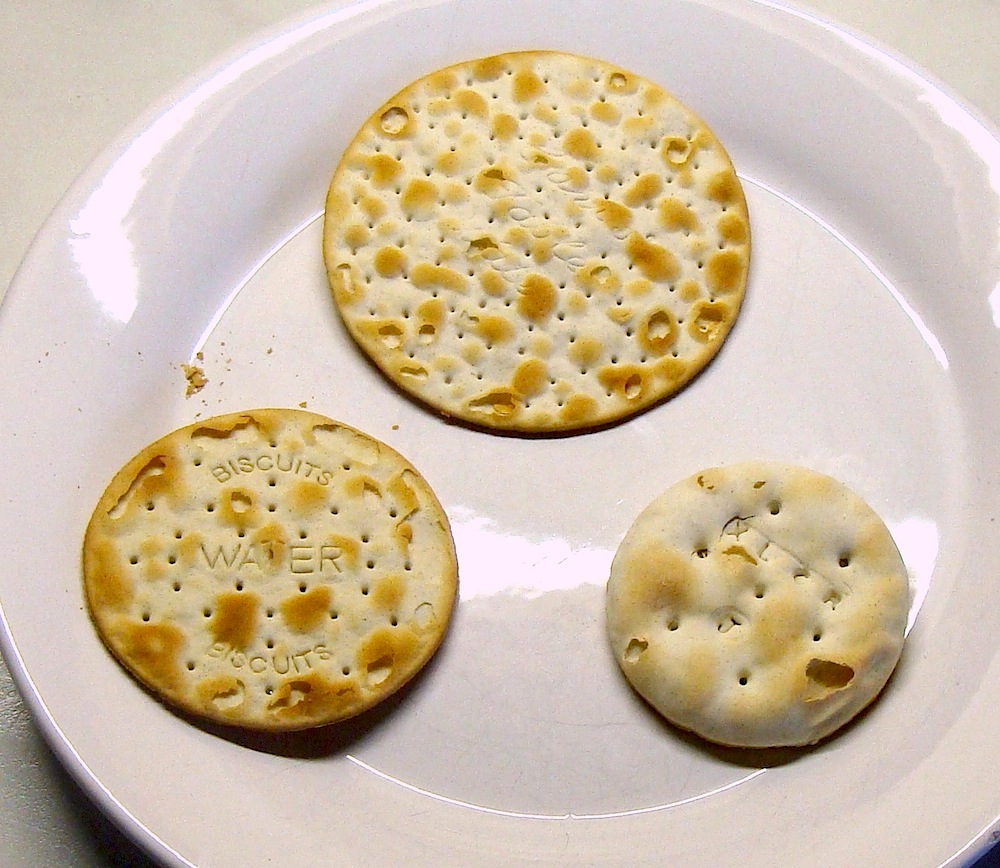|
Couque De Dinant
The ''Couque de Dinant'' ( en, Cake of Dinant) is an extremely hard, sweet biscuit native to the southern Belgian city of Dinant in Wallonia. Preparation ''Couques'' are made with only two ingredients: wheat flour and honey, in equal amounts by weight, and nothing else at all: not even water or yeast. The dough is put in a wooden mould made from wood from the pear tree, walnut tree or beech tree. The moulds have a wide variety of shapes, which include animals, floral motifs, people or landscapes. The biscuit is cooked in an oven preheated to around for 15 minutes, which allows the honey to caramelize. On cooling, the biscuit becomes very hard, and can be preserved indefinitely. Due to this property, ''couques'' can be displayed as decoration, used as Christmas tree ornaments, or used to commemorate special occasions. A variant, the ''couque de Rins'' also adds sugar to the dough. It is sweeter and softer as a result. Consumption Due to their extreme hardness and fairly ... [...More Info...] [...Related Items...] OR: [Wikipedia] [Google] [Baidu] |
Caramelize
Caramelization is a process of browning of sugar used extensively in cooking for the resulting sweet nutty flavor and brown color. The brown colors are produced by three groups of polymers: caramelans (C24H36O18), caramelens (C36H50O25), and caramelins (C125H188O80). As the process occurs, volatile chemicals such as diacetyl are released, producing the characteristic caramel flavor. Like the Maillard reaction, caramelization is a type of non-enzymatic browning. Unlike the Maillard reaction, caramelization is pyrolytic, as opposed to being a reaction with amino acids. When caramelization involves the disaccharide sucrose, it is broken down into the monosaccharides fructose and glucose. Process Caramelization is a complex, poorly understood process that produces hundreds of chemical products, and includes the following types of reactions: * equilibration of anomeric and ring forms * sucrose inversion to fructose and glucose * condensation reactions * intramolecular bond ... [...More Info...] [...Related Items...] OR: [Wikipedia] [Google] [Baidu] |
Biscuits
A biscuit is a flour-based baked and shaped food product. In most countries biscuits are typically hard, flat, and unleavened. They are usually sweet and may be made with sugar, chocolate, icing, jam, ginger, or cinnamon. They can also be savoury, similar to crackers. Types of biscuit include sandwich biscuits, digestive biscuits, ginger biscuits, shortbread biscuits, chocolate chip cookies, chocolate-coated marshmallow treats, Anzac biscuits, '' biscotti'', and ''speculaas''. In most of North America, nearly all hard sweet biscuits are called " cookies", while the term " biscuit" is used for a soft, leavened quick bread similar to a less sweet version of a ''scone''. "Biscuit" may also refer to hard flour-based baked animal feed, as with dog biscuit. Variations in meaning * In most of the world outside North America, a biscuit is a small baked product that would be called either a " cookie" or a " cracker" in the United States and sometimes in Canada. Biscuits in ... [...More Info...] [...Related Items...] OR: [Wikipedia] [Google] [Baidu] |
List Of Crackers
This is a list of crackers. A cracker is a baked good typically made from a grain-and-flour dough and usually manufactured in large quantities. Crackers (roughly equivalent to savory biscuits in the United Kingdom and the Isle of Man) are usually flat, crisp, small in size (usually or less in diameter) and made in various shapes, commonly round or square. Crackers * Animal cracker * Bath Oliver * Cream cracker * Crispbread * Cheese cracker * Graham cracker * Hardtack * Maltose crackers * Matzo * Mein gon * Nantong Xiting Cracker * Oatcake * Olive no Hana * Oyster cracker * Pletzel * Rice cracker * Saltine cracker * Taralli * Water biscuit Brand-name crackers * Arnott's Shapes * Better Cheddars * BEACH ASH CRACKERS * Bremner Wafer * Captain's Wafers * Carr's * Cheddars * Cheese Nips * Cheez-Itz * Club Crackers * Crown Pilot Crackers * Drasca * Goldfish (snack) * In a Biskit * Pepperidge Farm * Premium Plus * Rice Thins * Ritz Crackers ... [...More Info...] [...Related Items...] OR: [Wikipedia] [Google] [Baidu] |
Belgian Cuisine
Belgium, Belgian cuisine is widely varied with significant regional variations, while also reflecting the cuisines of neighbouring France, Germany and the Netherlands. It is sometimes said that Belgian food is served in the quantity of German cuisine but with the quality of French food.''Michael Jackson's Great Beers of Belgium'', Michael Jackson, Outside the country, Belgium is best known for its chocolate, waffles, fries and beer. Though Belgium has many distinctive national dishes, many internationally popular foods like hamburgers and ''spaghetti bolognese'' are also popular in Belgium, and most of what Belgians eat is also eaten in neighbouring countries. “Belgian cuisine” therefore usually refers to dishes of Belgian origin, or those considered typically Belgian. Belgian cuisine traditionally prizes regional and seasonal ingredients. Ingredients typical in Belgian dishes include potatoes, leeks, Crangon crangon, grey shrimp, white asparagus, Belgian endives and Belg ... [...More Info...] [...Related Items...] OR: [Wikipedia] [Google] [Baidu] |
Bronze And Brass Ornamental Work
Art in bronze and brass dates from remote Ancient history, antiquity. These important metals are alloys, bronze composed of copper and tin and brass of copper and zinc. Proportions of each alloy vary slightly. Bronze may be normally considered as nine parts of copper to one of tin. Other ingredients which are occasionally found are more or less accidental. The result is a metal of a rich golden brown colour, capable of being worked by casting — a process little applicable to its component parts, but peculiarly successful with bronze, the density and hardness of the metal allowing it to take any impression of a mould, however delicate. It is thus possible to create ornamental work of various kinds. Casting The process of casting in bronze and brass is known as ''cire perdue'', and is the most primitive and most commonly employed through the centuries, having been described in by the monk Theophilus Presbyter, Theophilus, and also by Benvenuto Cellini. Briefly, it is as follow ... [...More Info...] [...Related Items...] OR: [Wikipedia] [Google] [Baidu] |
Dinanderie
Dinant () is a city and municipality of Wallonia located in the province of Namur, Belgium. On the shores of river Meuse, in the Ardennes, it lies south-east of Brussels, south-east of Charleroi and south of the city of Namur. Dinant is situated north of the border with France. The municipality consists of the following districts: Anseremme, Bouvignes-sur-Meuse, Dinant, Dréhance, Falmagne, Falmignoul, Foy-Notre-Dame, Furfooz, Lisogne, Sorinnes and Thynes. Geography Dinant is positioned in the Upper Meuse valley, at a point where the river cuts deeply into the western Condroz plateau. Sited in a steep sided valley, between the rock face and the river. The original settlement had little space in which to grow away from the river, and it therefore expanded into a long, thin town, on a north-south axis, along the river shore. During the 19th century, the former ''Île des Batteurs'' (Drummers' Island) to the south was attached directly to the town when a branch of the Meuse w ... [...More Info...] [...Related Items...] OR: [Wikipedia] [Google] [Baidu] |
Liège Wars
Liège ( , , ; wa, Lîdje ; nl, Luik ; german: Lüttich ) is a major City status in Belgium, city and Municipalities in Belgium, municipality of Wallonia and the capital of the Belgium, Belgian Liège Province, province of Liège. The city is situated in the valley of the Meuse, in the east of Belgium, not far from borders with the Netherlands (Maastricht is about to the north) and with Germany (Aachen is about north-east). In Liège, the Meuse meets the river Ourthe. The city is part of the ''sillon industriel'', the former industrial backbone of Wallonia. It still is the principal economic and cultural centre of the region. The municipality consists of the following Deelgemeente, districts: Angleur, , Chênée, , Grivegnée, Jupille-sur-Meuse, Liège, Rocourt, Liège, Rocourt, and Wandre. In November 2012, Liège had 198,280 inhabitants. The metropolitan area, including the outer commuter zone, covers an area of 1,879 km2 (725 sq mi) and had a total population of 749, ... [...More Info...] [...Related Items...] OR: [Wikipedia] [Google] [Baidu] |
Charles The Bold
Charles I (Charles Martin; german: Karl Martin; nl, Karel Maarten; 10 November 1433 – 5 January 1477), nicknamed the Bold (German: ''der Kühne''; Dutch: ''de Stoute''; french: le Téméraire), was Duke of Burgundy from 1467 to 1477. Charles's main objective was to be crowned king by turning the growing Burgundian State into a territorially continuous kingdom. He declared himself and his lands independent, bought Upper Alsace and conquered Zutphen, Guelders and Lorraine, uniting at last Burgundian northern and southern possessions. This caused the enmity of several European powers and triggered the Burgundian Wars. Charles's early death at the Battle of Nancy at the hands of Swiss mercenaries fighting for René II, Duke of Lorraine, was of great consequence in European history. The Burgundian domains, long wedged between the Kingdom of France and the Habsburg Empire, were divided, but the precise disposition of the vast and disparate territorial possessions involved ... [...More Info...] [...Related Items...] OR: [Wikipedia] [Google] [Baidu] |
Sinterklaas
Sinterklaas () or Sint-Nicolaas () is a legendary figure based on Saint Nicholas, patron saint of children. Other Dutch names for the figure include ''De Sint'' ("The Saint"), ''De Goede Sint'' ("The Good Saint") and ''De Goedheiligman'' ("The Good Holy Man"). Many descendants and cognates of "Sinterklaas" or "Saint Nicholas" in other languages are also used in the Low Countries, nearby regions, and former Dutch colonies. The feast of Sinterklaas celebrates the name day of Saint Nicholas on 6 December. The feast is celebrated annually with the giving of gifts on St. Nicholas' Eve (5 December) in the Netherlands and on the morning of 6 December, Saint Nicholas Day, Belgium, Luxembourg, western Germany, northern France (French Flanders, Lorraine, Alsace and Artois), and Hungary. The tradition is also celebrated in some territories of the former Dutch Empire, including Aruba. Sinterklaas is one of the sources of the popular Christmas icon of Santa Claus. Figures Sinterklaas ''S ... [...More Info...] [...Related Items...] OR: [Wikipedia] [Google] [Baidu] |
Teething
Teething is the process by which an infant's first teeth (the deciduous teeth, often called "baby teeth" or "milk teeth") appear by emerging through the gums, typically arriving in pairs. The mandibular central incisors are the first primary teeth to erupt, usually between 6 and 10 months of age and usually causes discomfort and pain to the infant. It can take several years for all 20 teeth to complete the tooth eruption. Though the process of teething is sometimes referred to as "cutting teeth", when teeth emerge through the gums they do not cut through the flesh. Instead, hormones are released within the body that cause some cells in the gums to die and separate, allowing the teeth to come through. Teething may cause a slightly elevated temperature, but not rising into the fever range of greater than . Higher temperatures during teething are due to some form of infection, such as a herpes virus, initial infection of which is extremely widespread among children of teething ag ... [...More Info...] [...Related Items...] OR: [Wikipedia] [Google] [Baidu] |
Couque De Dinant With Scale , a hard Belgian biscuit
{{disambiguation ...
Couque may refer to: * Couque suisse, a pastry * Couque de Dinant The ''Couque de Dinant'' ( en, Cake of Dinant) is an extremely hard, sweet biscuit native to the southern Belgian city of Dinant in Wallonia. Preparation ''Couques'' are made with only two ingredients: wheat flour and honey, in equal amounts ... [...More Info...] [...Related Items...] OR: [Wikipedia] [Google] [Baidu] |








